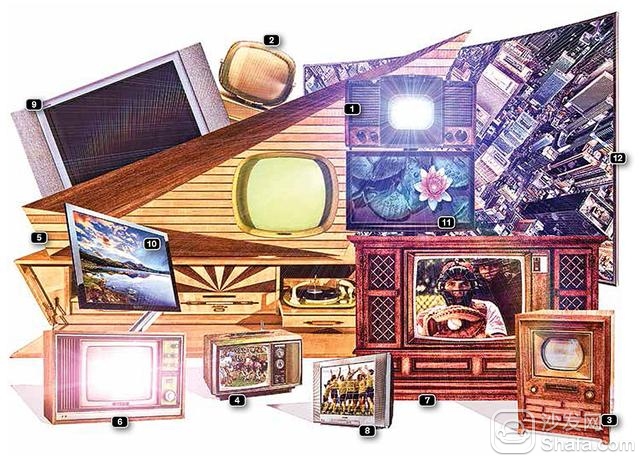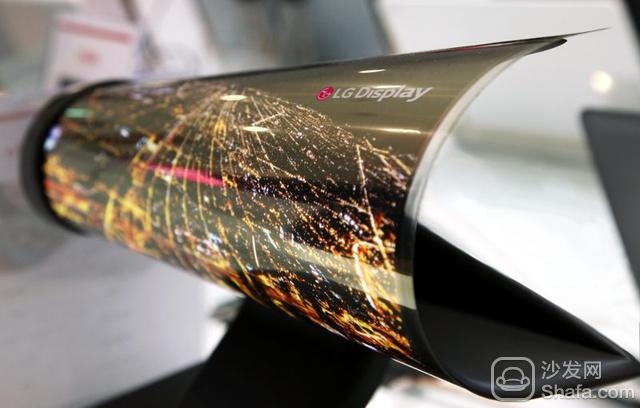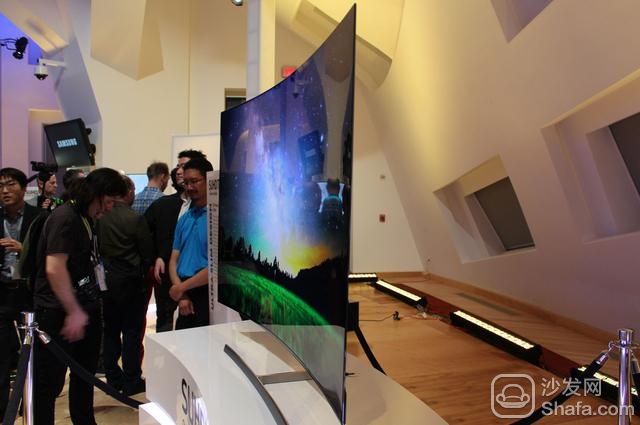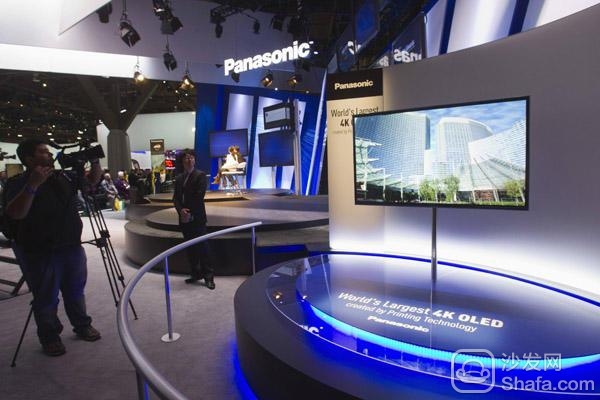
What will the future television become? Maybe it will die and be replaced by a screen that can be curled and free to assemble. Recently, Paul O'Donovan published an article entitled "The TV's Vanishing Act." Until last November, O'Donovan was an analyst at Gartner who studied the development of digital TV, set-top boxes, and digital video networks for the home. Years of research experience convinced him that television would be far away. O'Donovan’s own home has 4 Internet TVs, and a video projector is installed in the living room. The sound comes from a 45-year-old Rotel amplifier.
Let's look for clues to disappear from history and future clues:
A brief history of television
In the 1950s, television began to replace radio as the main equipment for home entertainment, and television dominated the consumer electronics world. Television is constantly changing. The previous television was housed in a hard wood box. The screen was like a small round borehole; the current TV is slim and stands like a statue or hangs on a wall. Regardless of the change, television seems to be a box of electronic components: a tuner/demodulator, a video processing board, and audio hardware; in front of it is a luminous display, which determines the design of the home and determines the location of the furniture. Ruled people's entertainment life.
In the long course of development, television has caused some technical disputes. Flat panel technology replaces cathode ray tubes, and then a civil war has taken place on the flat panel. LED and backlight LCDs are now well-deserved protagonists. In the 1980s, people began to abandon roof antennas, insert TVs into cable set-top boxes, and later purchase so-called smart TVs to watch online video and TV shows. But in the room, you can still easily recognize the existence of the TV. Compared with watching a cartoon TV during childhood, it is indeed flatter, lighter, and wider, but we can still recognize it.
In the nearly 100-year history of rivers, television has undergone many changes. For example, the image of television experienced the following changes: RCA 630TS in 1946, Philco Predicta in 1950, RCA CT100 in 1954, GE Portacolor in the late 1960s and early 1970s, Kuba Komet in the 1960s, Sony Trinitron in 1970, Zenith Console TV in 1981, Sony 32-inch TV in 2004, Sharp LCD TV at the turn of 2000, Sony XEL1 OLED TV in 2008, Panasonic Plasma TV in 2010, and finally Samsung Surface TV in 2014.

Say goodbye to the tuner to make the TV thin
The TV that we were familiar with is almost gone. The tuner (converting RF signals into audio and video, which essentially makes television a TV) is gradually being phased out, along with other old electronic components. Due to the advancement of screen technology, the display itself is about to disappear, and it will disappear at least when it is not used.
Years of technological evolution have brought me to a turning point. When the TV screen is flattened, some manufacturers begin to install speakers, power supplies, and other electronic components into separate boxes. Their goal is to make the screen light enough to easily hang on the wall. Evolution has made the screen thinner, and “thin†itself has become a selling point. In recent years, television manufacturers have been challenging the limits: making television infinitely thin.
There are other factors that contribute to TV thinning. After the introduction of the light guide LED backlight technology, engineers can move the lighting system on the back of the TV to the edge. Before the TV was thick, it was now thinner. Recently, manufacturers have introduced OLED screens, which can be down to 2.57 mm in thickness. Because of this, the original electronic components that regulate television signals and process audio and video are no longer suitable for today's television. How to do? The manufacturer changed the location of the components, placed in a separate box or rack, and then connected to the TV with a high-speed data cable.
The first company to abandon the tuner was the pioneer. In 2008 it launched a 50-inch plasma TV. The Pioneer Kuro KRP-500A has two wires: a power cord and a data cable. The data line receives signals from an independent multimedia receiver. This design is very good, the TV can be hung on the wall. You can connect DVD players, video game consoles, speakers, and other devices to separate boxes without any difficulty. In the same year, Philips introduced a 42-inch Essence LCD TV. This TV has only one wire and it can both supply power and transmit data to the screen. In 2008, Sony introduced the first OLED TV, and the 11-inch XEL-1 put all the electronic components into the stand to emphasize the ultra-thin features of the new display technology.
The trend of “independent independence†of electronic components has not stopped and continues. For example, LCDs and OLED TVs that Samsung and LG are selling also place electronic components in separate boxes, such as Samsung's One Connect Box, or in racks, such as LG's Signature G6 OLED 4K TV (released at CES 2016). ).
In their opinion, future TVs will be equipped with dedicated tuners. why? Since the tuner makes the TV a TV, although you can completely ignore its existence, as long as the device can send streaming video signals to the screen, you can use it to drive the TV. These devices include smart phones, tablets, PCs, and other small peripherals such as Apple TV, Roru products, Google Chromecast, Amazon Fire TV Stick.

The rise of online video services
These peripherals can be used with screens without a tuner, such as a PC monitor, as long as the monitor has an HDMI interface and speakers. Most monitors have an HDMI interface, but they don't have audio capabilities. From this point of view, it's not as powerful as a TV.
Even if all products are in place, there are still obstacles to moving the entire TV experience to a computer monitor because it cannot receive signals from wired cables, satellite antennas, and regular antennas without a fixed tuner. As a result, a pure cable television experience cannot be obtained on a computer monitor. In the United States, you can't see Turner Classic Movies. You can't see Virgin Media in the UK. But this restriction is getting smaller and smaller because all the on-demand services now provide streaming video over the Internet, including Netflix, Comcast Xfinity, ESPN Player, HBO Go, and Hulu. Massive services can broadcast current TV shows and provide a large number of movies and television programs, with the exception of most national and local news programs and regularly scheduled webcasts.
Please note that I am not saying that news and scheduled radio programs cannot be viewed on the Internet. If the broadcaster is willing to put the program online, most homes do not need TV tuner and similar equipment to watch it. That day will inevitably come, which is earlier than we thought.
Some people do not need a TV tuner, although they have not yet used an online video service. In today's environment, the tuner is only needed when the television is connected to an antenna (usually on the roof) and receives broadcast signals from the air. Many people watch "traditional" TV channels via satellite or cable. They only need to connect to an external box. There is no need to use the tuner in the TV. In the United States, the CEA (Consumer Electronics Association) estimates that only 7% of households receive TV signals from the air, which is approximately 8 million households. In other parts of the world, more people receive broadcast signals from the air: 20% of households in Asia rely on rooftop antennas, and 40% in Europe.
In spite of this, in regions outside the United States, more and more people watch videos using devices without a tuner, such as mobile phones, tablets, and computer monitors. It is ironic that in the past many years, some companies have tried to install tuners on various devices, but all these efforts have been eliminated. why? Who is willing to watch TV while sitting at the table and moving!

Looking ahead, the screen will "disappear"
To make the screen thinner, most TV makers quietly abandoned the tuner. A tuner is about the size of a cigarette box. Deleting the tuner can reduce the cost, of course, not too much, the tuner and related circuit board need $4, delete is not a radical move. The tuner will slowly exit. It takes a long time and few people notice it. At some point in the future, we may not buy a TV with a tuner. Instead, we determine what screen to buy based on the device we use—Apple TV, Roku, or a smartphone.
Once we remove the tuner from the screen, there is actually no difference between the screen and the computer monitor. We watch network video on a computer monitor. Most computer monitors do not have a speaker. You may not manage this "screen" called the monitor, because you may never connect it to a traditional computer. We will probably call it a "large flat panel display" for home use, but we will not call it TV.
why? Because the huge screen that hangs quickly on the wall disappears, something like an "invisible display" is replaced. When manufacturers first showed giant flat-screen TVs (now they have become commodities into millions of households), they realized that there was a huge "black hole" behind the walls. They think that eventually the black hole will disappear: the life of the display will be extended, the energy consumption will drop to a critical point, when the user can let the screen is always open, it can display family photos, favorite works of art.
At the CES exhibition held in January 2014, LG released a flexible OLED screen. At CES 2016, LG demonstrated a flexible 18-inch OLED screen. It can be bent into a 3 cm diameter tube. We can easily roll it up like a blind and collect it when not in use. For now, LG's new product costs are too high, and early users need to spend more than 6,000 US dollars to buy. For many years, manufacturers have been advocating that OLED screens are the ultimate video display technology, but until now the standard glass OLED screens are still not cheap enough. When the flexible screen goes to market, the price is certainly not low, and manufacturers will promote it as the ultimate solution. LG once said that in the near future the company will be able to produce Ultra HD Curlable TVs with 55-inch or larger screens, but it did not disclose the exact time.
There is another way to make the screen disappear! Earlier this year, Samsung demonstrated the concept of 170-inch modular TV screen, which consists of small panels, panels can be seamlessly connected, combined into any size large screen, a bit like video wallpaper. The modular system allows consumers to build large screens of any size at a much lower cost. If the industry develops according to Samsung's strategy, the tuner will be further separated from the screen and no one needs or wants 12 tuners.
There is another direction in the future that may also go through: a transparent display. Panasonic demonstrated a transparent display prototype at the CES in January this year. When we turn off the screen, we can see what's behind the screen, such as the artwork on the shelf, the book, or the wall behind the screen.
The future living room will look different. Many people are already accustomed to large-screen televisions. In the future, if they do not watch videos, they may not want the large black screen to become the center of the living room.

The development of screen technology will end the life of television
In the short term, silicon chips for video processing are difficult to be soft, and it is also very difficult to equip emission display technology with a flexible screen. There may be a way to go, and the video decoding and image processing electronics are installed independently and are not embedded in the display screen, and the video data information is transmitted to the screen through the wireless form. As a result, we not only removed the TV tuner, but also removed the electronic components so that the screen could only be used as a display. In the future, once screens without tuners and without many electronic components appear, they can “disappear†when not in use. By then, televisions will die.
Like many things in life, the tuner will not disappear overnight. According to my predictions, in mid-range and low-end TVs, the tuner will insist on survival for up to 20 years. Or the tuner ships with the display as a separate accessory, with instructions for installation. You may never open it, and there is an RCA cable that you may never use. In the consumer electronics world, some technologies that you think have already been eliminated can survive for several years or even decades, and then they will end in life. This is especially true for technologies that occupy a large market share for a long time. It is very difficult for habits to change once they are cultivated.
For example, Philips has introduced a small audio tape. Although the invention has been around for 54 years, you can still buy audio tapes, players, and tape recorders. It's just that the equipment is much better now. Digital technology has been introduced, CDs can be played, and chips are built-in. recorder. When 3D TV came out in 2010, companies had hoped that it could lure users to upgrade old TV. As a result, public interest was not great and 3D contents were too scarce. In many of today's TVs, 3D is still the standard feature of multimedia chips.
RF tuners may also continue to survive for 20 years, mainly for two reasons: First, there are still many people in the world receiving broadcast signals from the air, such as Europe, the Middle East, Africa, and Asia Pacific, which is the main reason; One reason is that consumers are reluctant to buy televisions without tuners to watch TV programs, even though they have not used TV tuners for many years.
We can already see the future. A curlable, multi-panel display will end the life of the living room and large black rectangular TVs in the home. In the future, we can use different devices to deliver different types of video to the walls. When new technology emerges, we can replace old equipment. This will benefit the environment, save money, and optimize our lifestyle. This type of business model is better for TV manufacturers, they can innovate faster and they can differentiate themselves in highly competitive markets.
Led Wall Washer Light,Led New Wash Wall Lights,Led Wall Lights Indoor,Indoor Led Wall Washer Light
t-smartlight , https://www.t-smartlight.com